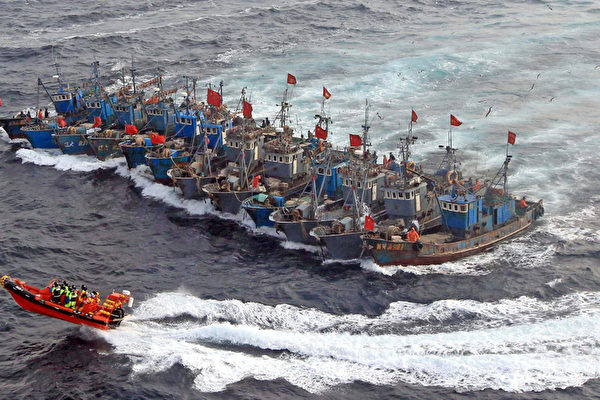Over the past thirty years, the thriving giant squid population along the Pacific coast of Peru has provided a lifeline for local fishermen, including Francisco Chiroque, in what is considered one of the world’s richest fishing grounds. However, this year, his catch has significantly decreased.
According to a report by The Wall Street Journal, Chiroque and the Peruvian fishing industry attribute the decline in squid catch to the hundreds of Chinese fishing vessels patrolling the edges of Peru’s national waters. So far this year, Peru’s squid catch has dropped by 70%, with the fishing industry attributing this situation to the industrial-scale fishing conducted by the Chinese fleet in waters where small fishing boats traditionally operate.
“They fish day and night,” said 49-year-old Chiroque, who serves as the president of the squid fishermen’s association in Paita, the northernmost city along Peru’s Pacific coast and a key hub for the Peruvian squid industry.
“This predatory behavior is outrageous,” he said.
The Chinese Ministry of Foreign Affairs has denied responsibility for the decline in squid catch, stating that fisheries cooperation is a highlight of Sino-Peruvian relations.
China boasts the world’s largest fishing fleet. U.S. officials and environmentalists point out that China’s thousands of industrial fishing vessels pose a threat to ecosystems, endangering fisheries from Africa to Latin America. The Biden administration has imposed sanctions on China’s flagship vessels. U.S. officials argue that China’s fishing practices are a major global maritime security threat, surpassing even piracy.
“Throughout the world’s oceans, this fleet is infamous for serious violations,” said Alfonso Miranda, head of Calamasur, representing squid industry representatives from Mexico, Ecuador, Peru, and Chile. “This could lead to the disappearance of Peru’s artisanal fishermen.”
54-year-old Peruvian squid fisherman Segundo Meza has lost his job and now spends his days caring for his grandson. His son has taken a job at a blueberry farm. To save money, they skip breakfast and have stopped paying water and electricity bills.
“The ocean is my life,” he said. “But now everything is in chaos.”
The first fleet of 22 Chinese ships arrived on the west coast of South America in 2001, crossing the Pacific to fish for giant squid measuring up to nearly 10 feet (3.048 meters) long.
According to data from the South Pacific Regional Fisheries Management Organization, the Chinese ships caught 17,700 tons of squid that year. Now, Chinese fishing vessels harvest around 500,000 tons of squid annually from these waters.
The fleet has grown to around 500 ships. Satellite images show that the fleet spends most of its time hovering about 200 miles off the coast of Peru, closely following the boundaries as the squid migrate. This means that even if the Chinese vessels do not enter Peruvian waters, their catch will still affect the local population.
“This is unfair competition,” said Elsa Vega, president of the Peruvian Artisanal Fishermen’s Association. “It’s like the battle between David (justice) and Goliath (evil).”
The U.S. Coast Guard has launched operations to combat illegal fishing along the coast of South America, boarding and inspecting Chinese vessels engaged in illegal fishing in Peru and Ecuador for the first time.
China’s fishing hegemony has sparked backlash in southern countries worldwide. According to local officials and environmentalists, along the coast of Ghana, Chinese fishing vessels have depleted small sardine stocks vital to coastal communities; in the Indian Ocean, Chinese tuna fishing vessels have been accused of involving forced labor and shark finning prohibited by the U.S. In 2016, the Argentine Coast Guard sank a Chinese vessel accused of illegal fishing.

